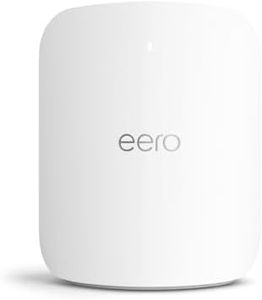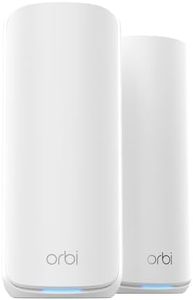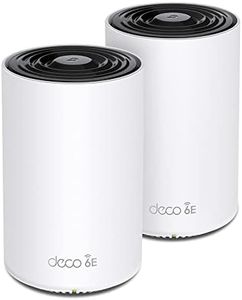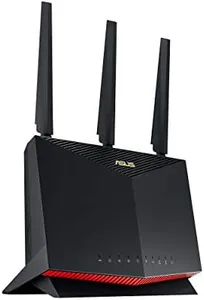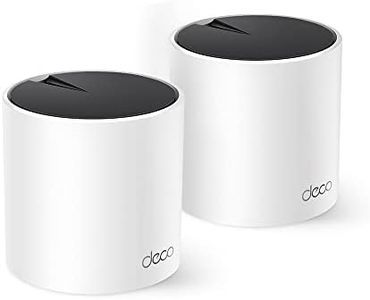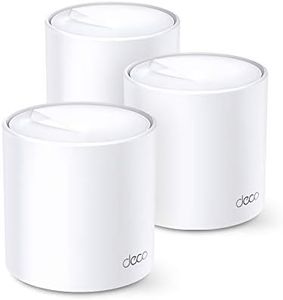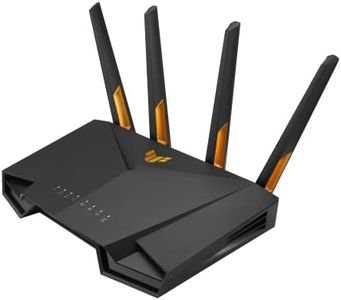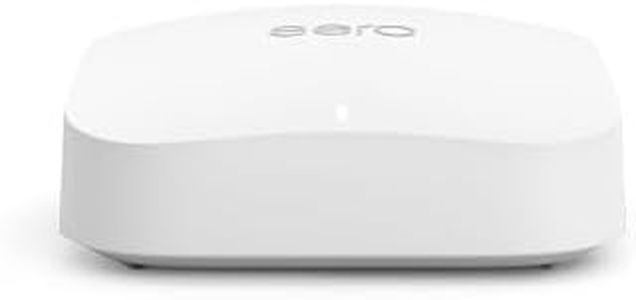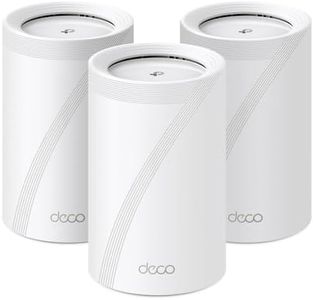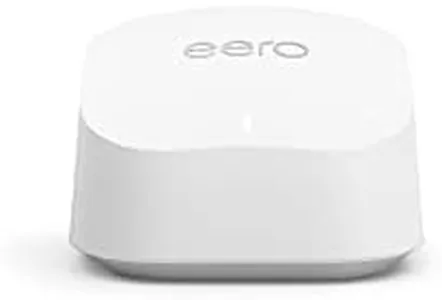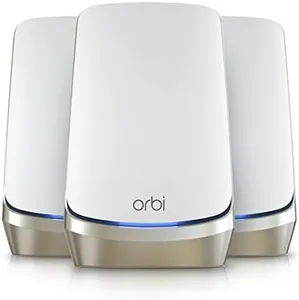We Use CookiesWe use cookies to enhance the security, performance,
functionality and for analytical and promotional activities. By continuing to browse this site you
are agreeing to our privacy policy
10 Best Mesh Network
From leading brands and best sellers available on the web.By clicking on a link to a third party's website, log data is shared with that third party.
Buying Guide for the Best Mesh Network
Mesh networks are a great way to ensure your entire home or workspace has strong and stable Wi-Fi coverage. Instead of relying on just one main router, a mesh system uses several units — often called nodes or satellites — that work together to hold and extend your network’s signal everywhere you need it. This is especially useful for larger homes, places with lots of walls, or environments where the Wi-Fi from a regular router keeps dropping or getting weak. When choosing a mesh network, it's important to understand what matters most for your own space: coverage area, speed, number of users, and extra features. Knowing what each key specification means will make your choice much easier and help you invest in a setup that keeps you reliably connected.Coverage AreaCoverage area tells you how much space a mesh system can handle, usually measured in square feet or square meters. This spec is important because you want to make sure the network reaches every room where someone will use the internet. Smaller systems typically cover under 2,000 square feet — good for apartments or small homes. Mid-range systems stretch from 2,000 to 4,000 square feet, fitting medium-sized houses or townhomes. The largest setups can cover 5,000 square feet or more, making them suitable for big houses or offices. You should look at the size and layout of the area you want to cover, considering both the number of floors and thick walls, and choose a mesh system that can easily reach these spaces. A little extra coverage is better than falling short, but don’t overbuy if you live in a compact area.
Speed (Wi-Fi Standard and Bandwidth)The speed specification tells you how fast your network can move data around, usually shown in Mbps or Gbps and sometimes marked with things like Wi-Fi 5, Wi-Fi 6, or Wi-Fi 6E. Fast speeds are important if you do things like stream movies in high definition, play online games, or have many devices running at once. Wi-Fi 5 covers most everyday needs, but Wi-Fi 6 or Wi-Fi 6E is better for busy homes and offices or for future-proofing. Entry-level mesh systems may offer combined speeds under 1,200 Mbps, suitable for occasional browsing and light streaming. Mid-range options usually range from 1,200 to 3,000 Mbps, covering active streamers, gamers, or multi-person households. High-end choices can handle 4,000 Mbps or more, making them a good fit if you often move large files or want the fastest experience possible. Your actual internet speed from your provider is a good guide: you won’t benefit from much higher mesh speeds unless your plan — and your devices — can use them.
Number of NodesThis tells you how many bases or satellites come in the package and work together to spread the network. The number of nodes matters because each one extends coverage, helping the signal reach further without dropping off. Simple two-pack systems are fine for flats or small houses, while three or more nodes work better for larger or multi-story homes. Some brands let you add more later if you move or need extra coverage. For most, the right number of nodes depends on your home’s size, layout, and trouble spots with signal. If you have many rooms or more than one floor, more nodes often mean fewer dead zones.
Backhaul OptionsBackhaul is how the mesh nodes talk to each other behind the scenes. They might do this wirelessly or through wires (Ethernet). Strong backhaul options are important for fast, uninterrupted connections throughout your network. Basic systems use only a Wi-Fi backhaul, which can be enough in small, uncongested environments. Higher-end systems have a dedicated wireless band — or even let you use Ethernet for a physical connection — guaranteeing the fastest and most stable mesh communication. If speed and reliability matter to you, pick a mesh setup that supports dedicated wireless or wired backhaul, especially if you have thick walls, lots of interference, or you want the best speed everywhere.
Number of Supported DevicesThis spec tells you roughly how many phones, computers, smart TVs, and smart home devices the network can handle at the same time. The importance of this number grows with the size of your household or office. Less advanced mesh systems support under 20-30 devices, enough for individuals or couples. Mid-range systems can handle 40-80 devices, covering families, roommates, or busy home setups. High-capacity meshes are needed if you have over 100 devices, often in offices or tech-heavy homes. Think about not just your current devices, but the smart gadgets you might add soon, and choose a system that won’t become overloaded.
Parental Controls and Security FeaturesThese features help you manage which sites or types of content are available on the network and provide extra protection against online threats. They're especially important for families or anyone who wants more control and peace of mind. Basic systems may offer only simple website-blocking or usage timers. More advanced options include device-level controls, content filtering by age group, and automatic updates to keep security strong. If you're concerned about privacy, have kids, or want to keep track of your network activity, prioritize a mesh system with easy-to-use, built-in parental controls and modern security features.
Ease of Setup and ManagementHow easy it is to set up and manage your mesh network matters a lot, especially if you aren’t comfortable with tech. Good systems offer step-by-step apps for your phone, clear instructions, and simple ways to add or move nodes. Some provide extra tools for checking network health, seeing connected devices, and changing settings with just a few taps. Beginner-friendly options are great if you want to get online fast and rarely adjust things. If you want more control and are comfortable exploring tech settings, advanced systems allow deeper customization, but the easiest setup is best for most users.

